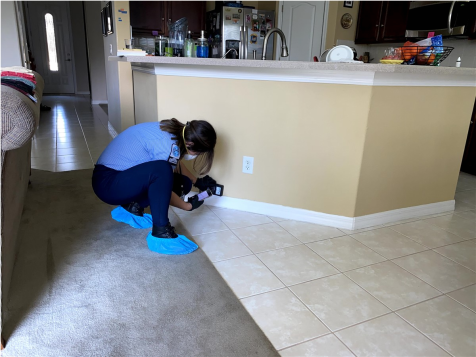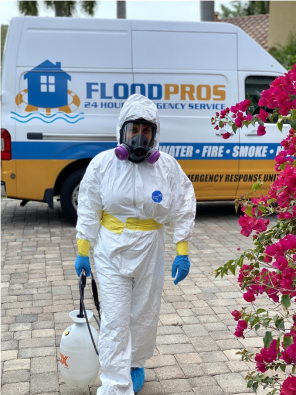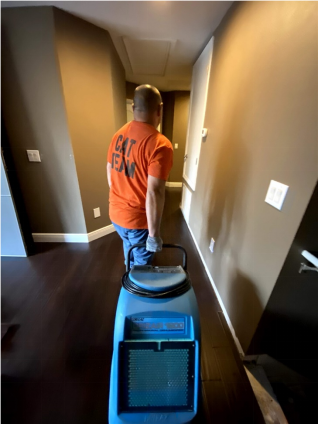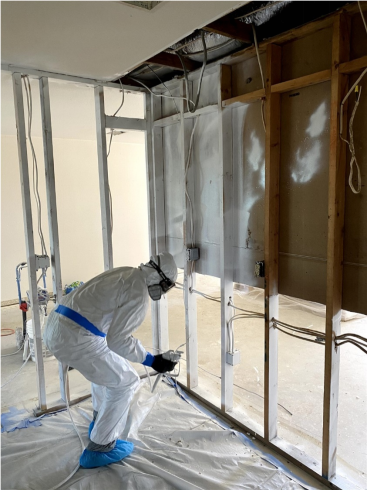
Flooding is a prevalent threat in Tampa, affecting thousands of residents annually. According to the National Flood Insurance Program (NFIP), over 25% of flood insurance claims nationwide originate in Florida, with Tampa Bay being a particularly vulnerable area. Floods can cause significant property damage, disrupt lives, and pose health risks.
Recovering from a flood requires a well-coordinated and efficient cleanup process to minimize further damage and ensure a safe return to your home. This guide outlines 10 essential steps for effective flood cleanup in Tampa, empowering you to navigate the recovery process with confidence.
1. Prioritize Safety: Assess the Situation
Before entering your flooded property, prioritize your safety. Here's what to do:
· Turn off utilities: Contact your utility company to disconnect electricity, gas, and water lines to prevent electrical hazards and gas leaks.
· Inspect for structural damage: Look for cracks in walls, foundation issues, or leaning structures. If you suspect any instability, don't enter. Contact a structural engineer for a professional assessment.
· Beware of hazards: Watch for downed power lines, exposed wiring, and contaminated floodwater. Wear protective clothing, including waterproof boots, gloves, and a respirator, to avoid contact with mold, sewage, and other contaminants.
2. Document the Damage

Thorough documentation is crucial for insurance claims. Take photos and videos of the flood damage, starting from the exterior of your property and working your way inside. Capture close-up shots of the waterline on walls, furniture, and appliances to illustrate the extent of the damage. Include photos of any structural damage, such as cracks in foundations or walls. Additionally, take photos and videos of all your damaged belongings, including furniture, electronics, clothing, and linens. Document the date and time that you take the photos and videos for your records.
3. Contact Your Insurance Company and File a Flood Insurance Claim
Flood insurance is vital for financial recovery after a flood. If you have flood insurance, contact your insurance company as soon as possible to initiate the claims process. They will assign an adjuster to assess the damage and determine your coverage. The adjuster will provide you with specific instructions and claim forms. Be sure to follow their instructions carefully and provide all requested documentation.
Here are some tips for filing a flood insurance claim:
· Gather all your documents: Have your insurance policy number, contact information, and any documentation related to the flood (e.g., photos, videos, police reports) readily available.
· Be prepared to describe the damage: Be clear and concise when describing the extent of the damage to your property and belongings.
· Ask questions: Don't hesitate to ask your adjuster questions about the claims process, coverage details, or anything else you're unsure about.
· Keep records of your communication: Maintain a record of all communication with your insurance company, including dates, names, and any agreements reached.
4. Pump out Standing Water

Standing water poses a significant health risk and accelerates structural damage. Promptly removing floodwater is crucial to minimize these risks. Rent a submersible pump with the appropriate capacity for the volume of water in your property. Before using the pump, identify the lowest point of entry for the floodwater and begin pumping from there. This will help ensure the complete removal of standing water.
When pumping water out of your basement or crawl space, discharge the water to a safe location outdoors, away from your foundation. Standing water can also wick up walls, so remove baseboards along flooded walls to facilitate drying and prevent mold growth.
5. Promote Drying and Ventilation
· Open windows and doors: Create cross-ventilation to promote air circulation and expedite drying.
· Dehumidify the air: Use dehumidifiers to remove excess moisture from the air, especially in areas with high humidity like Tampa.
· Direct fans strategically: Use fans to circulate air and dry out carpets, furniture, and walls.
6. Salvage and Clean Belongings
· Furniture: Move furniture away from wet walls and elevate it off flooded floors. Clean and disinfect furniture with a mild disinfectant solution.
· Electronics: Discard any electronics that came into contact with floodwater.
· Clothing and Linens: Wash clothes and linens in hot water with detergent. Discard any items that cannot be salvaged due to contamination or excessive damage.
· Carpets and Rugs: Salvaging carpets depends on the water source (clean vs. sewage) and the extent of damage. Professionally clean carpets that can be saved. Heavily damaged carpets should be discarded.
7. Address Mold Growth

Mold thrives in damp environments. Promptly address any mold growth to prevent health problems and further property damage. Here's what to do:
· Identify mold: Small mold patches (less than 10 square feet) can often be cleaned with a bleach solution (mix 1 part bleach with 10 parts water). Wear proper protective gear while cleaning.
· Extensive mold growth: For larger areas or if you suspect black mold, consult a professional mold remediation company.
8. Sanitize and Disinfect
Floodwater can be contaminated with sewage, bacteria, and other harmful substances. Thoroughly sanitize and disinfect your property to ensure a safe environment. Use a disinfectant solution recommended by the Centers for Disease Control and Prevention (CDC).
9. Restore and Repair
· Flooring: Professionally assess and restore or replace damaged floors.
· Walls: Drywall exposed to floodwater may need to be replaced to prevent mold growth.
· Appliances: Professionally evaluate appliances that came into contact with floodwater.
10. Seek Additional Help
Don't hesitate to seek help from professionals throughout the flood cleanup process. This includes:
· Contractors for repairs and restoration work.
· Public assistance programs: FEMA (Federal Emergency Management Agency) may offer financial assistance to eligible residents.
· Mental health resources: Flooding can be a stressful experience. Consider seeking counseling or support groups to navigate the emotional challenges.
Experience swift commercial property restoration with Flood Pros USA's expert services in Tampa. Our certified specialists provide professional commercial property restoration, including water damage cleanup, storm damage repair, and flood damage restoration. With 24/7 availability and efficient restoration techniques, trust us to minimize downtime and restore your business promptly.
Don't let property damage impact your operations—contact Flood Pros USA today for comprehensive commercial property restoration services, and get back to business in Tampa!
Subscribe to Flood Pros USA's Blog


Comments